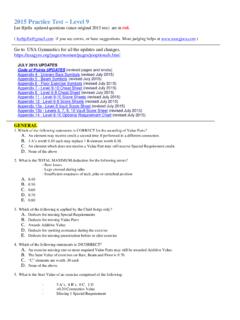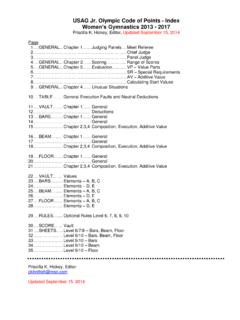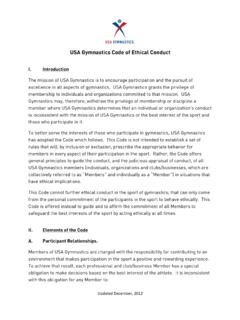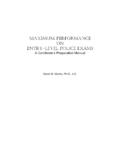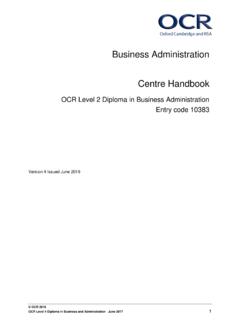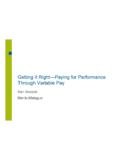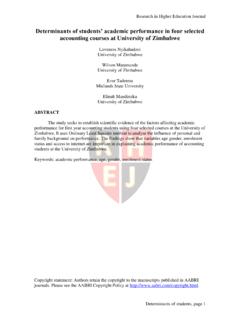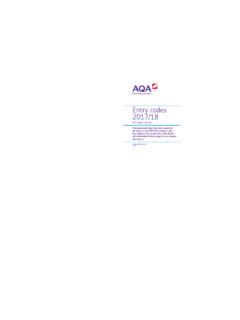Transcription of Read the following pdf’s from USA Gymnastics for all the ...
1 2013-2017 Practice Test Level 10 by Lee Bjella (email Lee at if you see errors, or have suggestions. More judging helps at ) read the following pdf s from USA Gymnastics for all the 2014 updates and changes. 's/ntc_MAY% 's/njoc_ntc_May%2011,% The following updates are to be kept in mind as you study: (taken from the above PDF s) UPDATE AUG. 1, 2014 JOINT MEETING JUNIOR OLYMPIC & TECHICAL COMMITTEES MINUTES May 11, 2014 Beginning August 1, 2014 UNEVEN BARS In order to fulfill the compositional requirement of sufficient change of direction at levels 9 and 10, the routine must include two elements (pirouette or release), one of which has a 180 or 540 turn and a second which has a minimum of 180 turn. The deduction is up to . Examples of applying the up to deduction: No elements with a minimum of 180 turn Only one element with 180 or 540 turn Only one element with 360 turn Both elements with 360 turn No deduction Two elements with 180 and/or 540 turn One element with 180 or 540 turn and one element with 360 turn UNEVEN BARS Clarification: The Weiler Kip elements (# , ) may be performed with legs straddled (hips bent) or together (hips extended) to receive B or D credit at the JO level.
2 UNEVEN BARS Whenever a B release element with flight over LB is directly connected with no counterswing to a D or E release element on HB, the B release will receive C value-part credit. UNEVEN BARS A back uprise directly connected to a Group 3, 6 or 7 circling element to handstand may be counted as either one C or may be separated into two elements, to the gymnast s benefit. FLOOR Clarification: Stag-split leap, and split leap on Floor are considered the same element all listed as element # in the JO Code of Points. Clarification for the landing of the last element in an Acro series on floor: There is no deduction for landing with feet a maximum of hip-width. A small step backward to a lunge is acceptable. BEAM Clarification - Stag-split leap and split leap on Beam are considered the same element, both listed as element # in the JO Code of Points. BEAM Elements and , the Silivas-type mounts, are considered sideward beam elements for compositional credit.
3 Regarding landings on Vault and dismounts on Uneven Bars and Balance Beam: No deduction for landing with feet a maximum of hip width apart, provided that they join (slide) the heels together on the controlled extension. If the entire foot/feet are sliding or lifted off the floor to join, it is considered a small step and a deduction of up to would be applied. Landing with feet further than hip-width apart will receive a deduction. (up to would be applied for landing with feet staggered (one in front of the other). PRACTICE TEST: GENERAL 1. Which of the following statements is CORRECT for the awarding of Value Parts? A. An element may receive credit a second time if performed in a different connection. B. D and E elements replacing missing B s and C s cannot count for Additive Value. C. 3 A s worth each may replace 1 B element worth D. An element which does not receive a Value Part may still receive Special Requirement credit.)
4 E. None of the above 2. What is the TOTAL MAXIMUM deduction for the following errors? - Bent knees - Legs crossed during salto - Insufficient exactness of tuck, pike or stretched position A. B. C. D. E. 3. Which of the following is applied by the Chief Judge only? A. Deducts for missing Special Requirements B. Deducts for missing Value Parts C. Awards Additive Value D. Deducts for spotting assistance during the exercise E. Deducts for missing presentation before or after exercise 4. Which of the following statements is INCORRECT? A. An exercise missing one or more required Value Parts may still be awarded Additive Value. B. The Start Value of level 10 routines on Bars, Beam and Floor is C. There is a deduction for each missing Special Requirement. D. An exercise with total Connection Value and no Difficulty Value will be awarded Additive Value. E. None of the above. 5. What is the Start Value of an exercise comprised of the following : - 5 A s, 3 B s, 0 C, 1 D and 1 E - + Connection Value - Missing 1 Special Requirement A.
5 D. B. E. C. 6. What is the Start Value of an exercise comprised of the following : - 2 A s, 2 B s, 1 C, 1 D, and 1 E - + Connection Value - No Dismount - No C Dismount A. B. C. D. E. 7. Which of the following deductions is CORRECT? A. Legs crossed B. Deviation from straight direction up to C. Illegal placement of supplementary mats D. Very large step or jump on landing E. Stretched body position - pikes down early (UB, BB, FX) up to 8. Which of the following statements is CORRECT? A. A .030 deduction on a D element makes it ineligible for Bonus. B. The same exact connection may receive Connection Value two times. C. Support on the mat with one hand is deducted D. Quality of movement reflects personal style - deduct up to E. E elements are worth Difficulty Value.
6 9. Which of the following is CORRECT when the bottoms of the feet do not touch first on the landing of salto elements? A. Value Part credit and Special Requirement credit are awarded, execution errors plus for the fall are deducted. B. Value Part credit and Special Requirement credit are not awarded and is deducted for the fall. C. Special Requirement credit is awarded, Value Part credit is not awarded and is deducted for the fall. D. Value Part credit is awarded, no Special requirement is awarded and is deducted for the fall. E. Value Part credit and Special Requirement credit are not awarded, execution errors plus for a large error are deducted. 10. What is the TOTAL MAXIMUM deduction for the following errors? - Spotting assistance during the exercise - Deep squat upon landing - Extra arm swing A. B. C. D. E. VAULT 11. What is the penalty for performing a different vault than the one flashed?
7 A. B. C. D. E. No penalty 12. What is the TOTAL MAXIMUM deduction for the following errors in a Handspring 1/1 twist off vault? - Arch in 1st flight - Insufficient exactness of LA turn in the second flight phase - Arch in 2nd flight - LA turn incomplete upon landing A. B. C. D. E. 13. What is the TOTAL MAXIMUM deduction for the following faults in a Handspring on 1/1 twist off vault? - Staggered hand placement - Deviation from a straight direction - Trunk movements to maintain balance A. B. C. D. E. 14. What is the penalty if the gymnast performs a piked tsukahara and fails to land on her feet first? A. B. C. D. Void vault E. None of the above 15. Which of the following would receive the LARGEST deduction? A. Brushing the vault table with body in the second flight B. Touching the table with only one hand on repulsion C. 3 large steps and a fall upon landing D. Insufficient extension before landing of tuck or pike vault E.
8 Coach standing between the board and table on a group 3 vault 16. What is the TOTAL MAXIMUM deduction for the following faults in a Tsukahara Stretched vault? - Knees bent in first flight phase - Legs crossed in second flight phase - Fall against apparatus upon landing A. B. C. D. E. 17. Which of the following is TRUE concerning the performance of a Vault without a signal from the Chief Judge: A. Vault is ignored, even if both judges see it. B. Gymnast has the option to perform two more vaults. C. CJ applies a penalty to the average score of the next completed vault. D The penalty may or may not affect the final score. E. All of the above are true. 18. What is the TOTAL MAXIMUM deduction for the following faults in a Tsukahara Tuck vault? - Legs apart in first flight phase - Total absence of extension before landing A. B. C. D. E. 19. What is the TOTAL MAXIMUM deduction for the following faults in a Handspring 2/1 Twist off?
9 - Shoulder angle in repulsion phase - One extra arm swing upon landing A. B. C. D. E. 20. Which of the following is CORRECT? A. No touch of the hands on vault table B. Spotting assistance during the vault C. Coach standing between board and table on handspring vault Void D. Failure to use safety collar for round off entry vaults Void UNEVEN BARS 21. What is the TOTAL MAXIMUM deduction for the following errors? - Insufficient tuck position on flyaway double back dismount - Touch on mat with feet on glide kip - Bent arms on two giant circles backwards - Three extra swings in a row A. B. C. D. E. 22. Which of the following is a B Value Part? A. Jump with 1/1 (360 ) to hang on HB Mount B. Jump with 1/1 (360 ) turn, glide kip to front support on LB Mount C. From handstand, clear pike circle backward to rear inverted pike support D. Clear hip circle backward on LB with hecht to hang on HB E.
10 Jump to brief hang on HB, salto roll backward, tucked with grip change to hang on LB - Mount 23. What is the TOTAL MAXIMUM deduction for the following faults in a cast to handstand with (180 ) turn in handstand? - turn completed 45 past vertical - Legs bent on cast -Feet flexed -Legs separated A. B. C. D. E. 24. Which of the following is the SMALLEST deduction? A. Fail to perform both forward and backward circles and releases B. Lack of variety of elements and connections C. Hit on the mat with foot on glide kip D. Lack of precision of handstand positions throughout E. Under rotation of release/flight elements 25. Which of the following is an E element? A. Jaeger salto piked B. Giant circle backward to handstand with 1/1 (360 ) turn in handstand C. Handstand on HB swing down forward, back facing LB, straddle back to handstand on LB D. Handstand on HB swing down between bars, swing forward to double salto backward piked dismount E.
